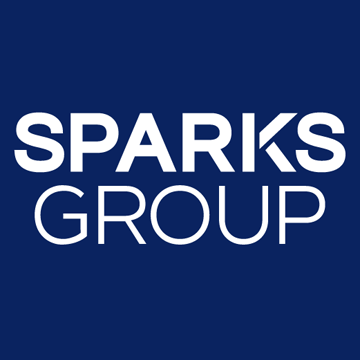
The “Great Resignation” trend is leading droves of workers to leave their jobs and seek other career opportunities … but what can companies do to better retain their skilled workers and prevent the expensive process of replacing a worker?
The best employee retention strategies include advocating for greater diversity, equity, inclusion, and belonging (DEIB) in company culture, addressing burnout causes, and considering what different types of workers need and want in their workplaces. Watch the recorded webinar, "Strategies to Retain the New Workforce" to learn tips your company can use to reduce turnover while promoting greater diversity.
The Cost of Employee Turnover
High employee turnover is extremely expensive for companies as they need to spend time and money searching for a replacement, interviewing, onboarding, and training — plus any operational or efficiency disruptions after losing an employee. But how can this trend be quantified in measurable impact?
Replacing a salaried employee can cost between six and nine months’ salary on average.1 For technical positions, this can be between 100 to 150% of an employee’s salary. For C-suite positions, this can cost up to 213% of their salary.
Turnover can also have non-monetary penalties, including damaged company brand and weaker team chemistry or collaboration, which can cause other workers to consider leaving.
Related Blog: The Great Resignation: Navigating the Competitive Hiring Landscape
How Does Diversity Play a Role in Retention?
Company cultures that promote DEIB not only attract a wider variety of talent but also better retain workers.
Diversity leads to lower turnover in several ways, by:2
- Creating a workplace of mutual respect, where everyone’s skills and input are appreciated
- Preventing or minimizing the chance of conflicts and quickly resolving them
- Making workers feel proud to work at their company since they hold diversity and inclusion values
- Encouraging a culture where employees from every background can share and gain experience from one another (ex: younger versus more experienced workers?
Companies can use diversity-related initiatives, such as mentorship programs for underrepresented groups, as differentiators to make their workplace more appealing.
Retention webinar: Hear from diversity and HR leaders about how companies can reduce employee turnover by prioritizing inclusion at their workplaces.
Addressing Employee Burnout
Burnout Is one of the leading causes of high turnover and can cause employees physical and psychological fatigue. Even while working from home, workers may get worn out after feeling unmotivated or disconnected from their coworkers.
If left unaddressed, burned-out employees are:3
- 2.6 times more likely to leave their current employer
- 13% less confident in their performance
- 63% more likely to take a sick day
Best practices for addressing employee burnout include:
- Conducting exit interviews to gather feedback about why employees are leaving
- Offering greater work-life balance or more breaks as needed
- Creating or expanding mentorship programs to help check in with new employees
Read More: How Employers Can Help Remote Workers Mitigate Work From Home Fatigue
Retaining Workers at Different Professional Levels
While some retention strategies work across the board, companies with higher retention for a particular professional level should consider the following.
Entry-level
Entry-level employees are usually the most likely to quit their jobs if they feel like they don’t fit in with company culture or don’t belong. Human resources specialists and managers should frequently check in with new hires to ensure they have what they need and are supported with their day-to-day work as well as long-term skill growth. Companies should also revamp their onboarding process to make their transition into the workplace as seamless as possible.
Middle- and Senior-Level
To reduce turnover for more middle-level or senior employees, companies should focus on their continued learning and skill development by offering them more responsibilities and opportunities for promotions to new levels within the company. Consider crafting different growth paths for these workers to help support their unique career goals to keep them engaged and working towards their professional goals.
Related Blog: Tips to Reduce Call Center Turnover Rates
Retaining Workers from Different Generations
ContactIn addition to looking at the level of the worker, it’s also important to consider the needs and expectations of different generations of workers to understand how to retain them better.
Millennials and Gen Z
Millennials and Gen Z aren’t afraid to bounce between employers to meet their career goals or find a workplace that better suits their values or beliefs, with 80% believing it’s okay to leave a job after six months.4
Younger generations also have a more critical view of company values. According to the Deloitte Global 2021 Millennial and Gen Z Survey, 44% of millennials and 49% of Gen Zs said they chose their job and workplace based on an organization’s values and ethics.5
Gen X and Baby Boomers
Gen X appreciates workplaces that prioritize team collaboration, the flexibility to try a variety of work, and having their feedback not only heard but put into practice.6 Companies looking to retain Gen X workers should provide them the freedom to brainstorm new ideas for projects or the business as a whole, as well as give them the tools and resources they need to try new things.
Baby Boomers appreciate companies that consider their technology and health needs, such as offering safe work options when it comes to potential exposure to COVID-19. One effective way to help retain Baby Boomers is to pair them with a younger worker to help them get acclimated to new technology or work-related platforms.7
Want to Learn More? Watch the Recorded Webinar: “Strategies to Retain the New Workforce”
Hear from diversity and HR leaders about how companies can reduce employee turnover by prioritizing inclusion at their workplaces.
Sources:
- https://www.peoplekeep.com/blog/employee-retention-the-real-cost-of-losing-an-employee#:~:text=The%20cost%20of%20employee%20turnover%20is%20high&text=Some%20studies%20predict%20that%20every,wage%20and%20role%20of%20employee.
- https://eddy.com/how-does-diversity-impact-employee-retention/
- https://www.shrm.org/hr-today/news/all-things-work/pages/blocking-burnout-in-your-organization.aspx
- https://outsider.com/news/u-s-economy-80-millennials-gen-z-workers-think-ok-leave-new-job-6-months/#:~:text=Approximately%2080%25%20of%20Millenial%20and,and%2030s%20currently%20change%20workplaces.
- https://www2.deloitte.com/content/dam/Deloitte/global/Documents/2021-deloitte-global-millennial-survey-report.pdf
- https://www.reliableplant.com/Read/6735/workplace-retain-key-talent
- https://www.recruiter.com/i/boomer-talent-4-ways-to-retain-them-longer/






